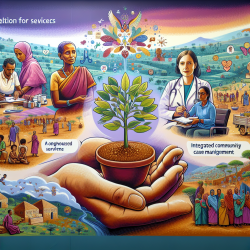Introduction
In the ever-evolving landscape of public health, implementing effective strategies is crucial to address pressing issues such as tobacco use. The research article "A comprehensive model to evaluate implementation of the World Health Organization Framework Convention of Tobacco Control" provides a robust framework for evaluating tobacco control measures. While the primary focus is on tobacco control, the principles and methodologies outlined can be adapted to improve various health interventions, including those in educational settings. This blog post will explore how practitioners can utilize these insights to enhance their skills and outcomes in school-based programs.
Understanding the Evaluation Model
The research conducted by Sarrafzadegan et al. (2012) outlines a comprehensive model for evaluating the implementation of tobacco control laws. The model is structured around three key levels of evaluation:
- Short-term Results: Immediate outcomes that can be observed following the implementation of a program.
- Process Evaluation: Assessment of the implementation process, including adherence to planned activities and stakeholder engagement.
- Long-term Results: The ultimate impact of the intervention on health outcomes and behavior change.
These levels of evaluation provide a structured approach that can be adapted to assess the effectiveness of interventions in school settings, particularly those aimed at improving speech and language outcomes for children.
Application in School-Based Interventions
For practitioners in speech language pathology, particularly those involved with online therapy services like TinyEYE, the insights from this research can be invaluable. Here’s how:
- Data-Driven Decisions: By adopting a similar evaluation framework, practitioners can systematically assess the effectiveness of their interventions. This involves setting clear objectives, measuring progress, and adjusting strategies based on data.
- Stakeholder Engagement: The process evaluation component emphasizes the importance of involving key stakeholders, such as teachers, parents, and school administrators, in the planning and implementation of interventions. This collaborative approach ensures that the programs are well-supported and aligned with the school’s goals.
- Long-Term Impact: By focusing on long-term results, practitioners can ensure that their interventions lead to sustainable improvements in children’s communication skills. This might involve periodic assessments and follow-ups to track progress over time.
Encouraging Further Research
While the research provides a solid foundation, it also highlights the need for ongoing evaluation and adaptation of strategies to suit local contexts. Practitioners are encouraged to conduct further research to refine their approaches and develop innovative solutions tailored to the unique needs of their students.
Conclusion
Incorporating comprehensive evaluation models into school-based interventions can significantly enhance their effectiveness and sustainability. By focusing on data-driven decisions, stakeholder engagement, and long-term impact, practitioners can create positive outcomes for children. For those interested in delving deeper into the original research, please follow this link: A comprehensive model to evaluate implementation of the world health organization framework convention of tobacco control.










